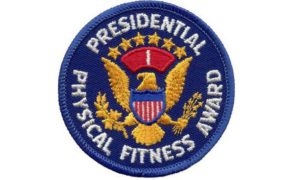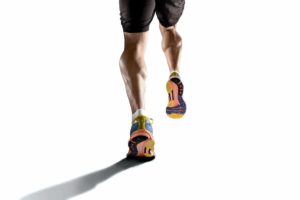Consumer EducationShare With Clients
On This Day in Fitness History
In June 1956, President Eisenhower called for a President’s Conference on Fitness of American Youth to be held at the U.S. Naval Academy. This meeting led to the formation of the President’s Council on Youth Fitness, later renamed the President’s Council on Physical Fitness. The conference convened in response to a study showing that American children were not as fit as European children in tests of muscular strength and flexibility in the trunk and legs.
Activity Tracker Usage Improves
The initial finding—that people stop using their fitness trackers after the first 6 months—seems to be evolving. In a new study by insurance company Humana, 80% of participants in a structured program were still using activity trackers after 6 months. Researchers at the Perelman School of Medicine at the University of Pennsylvania in Philadelphia found that game design elements—such as points, levels, badges and financial incentives—helped to keep users active.
Teen Fitness Matters
Keep encouraging teens to get active. Vigorous exercise is particularly beneficial for lowering their risks of heart disease later in life, according to recent research. Current public health guidelines recommend that children aged 5–18 should do at least 60 minutes of moderate to vigorous physical activity daily to reduce current and future heart disease risks.
Fit and Fat?
Weight loss may be the number-one goal for your clients, and if pounds don’t melt away quickly, some people may get discouraged and quit. New research strengthens the case that your program is still helping them obtain positive health outcomes, which is motivation to keep striving. In other words: Being fit benefits health even among people with severe obesity.
Behavior Change: What the Research Tells Us
Behavior change psychology has immense value to personal trainers and other fitness pros looking to motivate their clients.
Bone Loss: A Primer
Bone loss is a normal part of aging, and understanding it can help fitness professionals to develop preventive strategies for their clients.
Corporate Fitness Evolves
Employers are looking for partners to provide experiences and solutions in social, emotional, financial, family and career growth and well-being,” says Grace DeSimone, national group fitness director with Plus One Health Management, an Optum company, in New York City. Companies are also embracing mindfulness, meditation and virtual solutions for telecommuting employees, according to DeSimone. All these changes represent an evolution from programs aimed primarily at improving physical health and controlling healthcare costs.
Center of Attention: 4 Strategies for High-Intensity Mental Training
Ours is a world wired for distraction. Online information and social media constantly compete for our attention, thwarting efforts to focus on a single goal. The results are scattered thoughts, shorter attention spans and a rewiring of our brains, all of which prevent us from performing at our very best in whatever we do. For many of us, multitasking—focusing on several targets at once—may seem like the obvious solution. However, performance generally decreases in multitaskers by as much as 40% (Schwartz & Goldstein 2017).
Best Foot Forward
A challenging beginning. Ezra didn’t have an easy start. Born with club feet—a congenital condition in which the foot is twisted out of shape or position—he had his first surgery shortly after birth and spent the first few years of life sleeping with corrective boots.
Spotting and Fixing Flaws in Walking Biomechanics
Participating in a program of regular exercise is a good idea at any stage of life, but particularly as we get older. Exercising frequently and consistently has many documented benefits, including promoting good health, preventing disease, enhancing mental health and physical capacity, aiding recovery from injury and illness, minimizing the effects of aging, and improving one’s ability to handle the physical demands of life (Bird, Smith & James 1998).
Exercise Doesn’t Have To Be Strenuous To Be Effective
We know that replacing sedentary behavior with physical activity yields numerous benefits. And while high-intensity models are touted as a way to fast-track success, a new study out of Sweden says it’s not necessary to go all-out in order to boost health.
Location Is Everything When It Comes to BMI
The results are in: According to a new study, people who live within close proximity to a gym or activity center weigh less than those who don’t. Access to fast-food restaurants may also affect weight, say the study’s authors.
Helpful Productivity Apps
Do you struggle to stay focused or cross off items on your to-do list? There are apps for that. Here, five successful business owners share their favorite apps for getting things done:
A New Way to Combat High Blood Pressure During Menopause
Researchers have linked menopause with arterial stiffness and high blood pressure. A recent study of Korean women, led by The North American Menopause Society, suggests that taking the stairs is a good way to manage those conditions.
The Best Exercise for Alzheimer’s Disease
If you were asked to choose among cardiovascular exercise, resistance training and a combination of both to help people with Alzheimer’s disease, what choice would you make?
Researchers from the University of Connecticut wanted to understand the effects of exercise—if any—on cognitive decline in those at risk of or diagnosed with Alzheimer’s. The scientists performed a meta-analysis of 19 studies (23 exercise interventions) featuring 1,145 adults aged 77 ± 7.5 years.
Secrets of Muscle Growth
Muscle growth is often a goal for people seeking guidance from qualified fitness professionals. Recently, researchers from the University of Cumbria in Lancaster, England, reviewed relevant scientific papers to find best practices for achieving that goal.
The review authors looked at several primary factors associated with muscle hypertrophy: training volume, load, training frequency, training to momentary muscle failure, exercise variation, contraction type, exercise order, repetition tempo and interest recovery. Here’s a sampling of the conclusions:
9 Simple Ways to Keep Your Clients
The success of your business relies solely on your ability to attract and keep clients. Use these tips to enhance the client-trainer relationship so that you can focus more on providing quality service to your current clients and less on finding new ones.
7 Keys to Creating an Unforgettable Onboarding Experience
Do you want to strategically and consistently educate and motivate your new clients so they feel like they’re getting incredible results—and so you’re getting a steady flow of referrals and earning positive social proof? Are you ready to not just deliver but over-deliver? If your answer is yes, then one of your most important next moves is to create a step-by-step onboarding process.
Learn, Connect and Thrive at the IDEA® World Convention
Education is the foundation of the IDEA World Convention, but this fitness event offers plenty more than stellar instruction. For Jonathan Bernath, publicist-turned-personal-trainer, it’s where he discovered the “fitness family” that would guide him in his new career.
Learning About Lymph
Any routine visit to the physician includes the familiar cold-hands-under-the-earlobes lymph node check. But how often do you think about what the doctor is checking for or how important the lymphatic system is? And have you told your clients that physical activity plays a key role in supporting this crucial system?


















